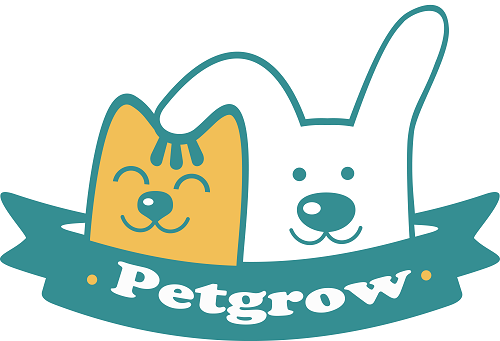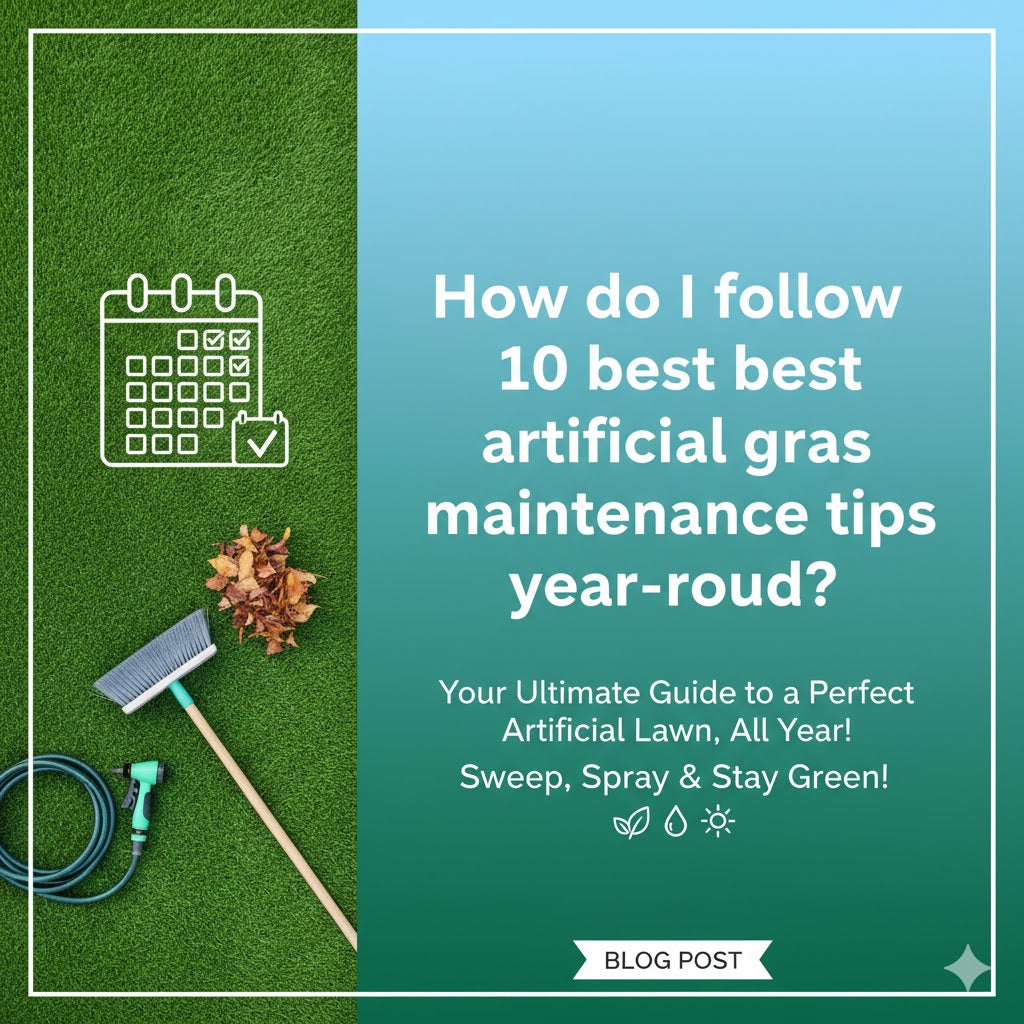Artificial grass is a great way to keep your yard looking green and clean without having to water or mow it all the time.
Taking care of your artificial grass helps it last longer and keeps it safe and fresh. With good artificial grass maintenance, you can enjoy a soft, clean lawn every season.
In this guide, you’ll learn the 10 best artificial grass maintenance tips that are easy to follow. These steps will help you keep your artificial turf in top shape.
Understanding Artificial Grass Systems and Their Needs
Before you start taking care of your artificial grass, it helps to understand what it is made of. An artificial turf system has several layers that work together to make your lawn look real and last a long time.
The top layer is the artificial grass itself. These are the green blades that you see and walk on. Under that is the infill material, which is usually sand or rubber. This helps the blades stand up and keeps the surface soft when you walk or play. Below the infill is a drainage system that lets rainwater flow through easily, so you do not get puddles after it rains.
At the very bottom is the sub base. It is made from materials like decomposed granite or Class II road base. These materials keep the ground strong and even. All these layers work together to make your artificial lawn look and feel natural.

10 Best Artificial Grass Maintenance Tips for a Clean and Green Lawn
Taking care of artificial grass is easier than natural grass, but it still needs some attention to stay beautiful all year. These 10 tips will help you keep your turf fresh, clean, and soft.
1. Brush the Grass to Keep It Standing Tall
Over time, walking, playing, and even weather can make the blades of your artificial grass bend or flatten. Brushing helps the grass stand upright again and keeps it looking natural. Use a stiff plastic broom or an artificial grass power brush. Brush against the way the blades lean so they lift up. Never use a brush with metal bristles because it can damage the fibers.
Brushing your turf every week or two is a good habit. In high traffic areas, such as walkways or play zones, do it once a week. Regular brushing also helps spread out the infill material so the surface stays even and soft.
2. Remove Leaves and Debris Often
Leaves, twigs, and dust can collect on your turf, especially during windy or rainy days. This debris can block drainage and cause mold or weeds to grow. Make it a habit to do debris removal at least once a week.
Use a plastic rake, a lawn vacuum, or a leaf blower to clear off the surface. These tools make cleaning easy without harming the turf. Pay extra attention to corners and shaded spots because dirt and waste often build up there. Keeping your lawn clear helps it look bright and clean every day.
3. Rinse the Lawn with a Garden Hose
Rain can wash away some dirt, but if you live in a dry area or have pets, rinsing is important. Use a regular garden hose to wash off dust, pollen, and light dirt. A quick rinse every one to two weeks is enough for most lawns. For shaded or pet areas, do it more often.
If you see sticky spots or spills, mix a small amount of dish soap in warm water and gently scrub the area with a soft brush. Then rinse with clean water. This kind of light cleaning keeps your artificial grass fresh and prevents odor buildup.
4. Clean Up Pet Waste the Right Way
If you are a pet owner, you already know that your pets love spending time outside. Cleaning up after them is an important part of artificial grass maintenance. Pick up solid waste as soon as you see it. You can use a scoop or a bag just like you would on natural grass. Rinse the area afterward with water.
For pet urine, rinse the spot regularly with a garden hose. You can also spray a mix of water and white vinegar to get rid of smells. There are pet-friendly cleaners such as enzyme concentrate or OxyTurf TurFresh BioS+ Uricide that help break down waste and control pet odor. Regular cleaning keeps your pet turf fresh and prevents odor buildup from dog urine or other pet waste.
5. Watch Out for Weeds and Moss
Even with a weed barrier under your turf, some weeds can grow on the surface or along the edges. Small seeds carried by the wind can land in the infill and start growing. Pull any weeds out by hand before they spread.
You can also use pre-emergent weed control products once or twice a year to stop new weeds from growing. In damp or shady areas, you might see moss or algae. Use a moss treatment made for artificial lawns to remove it safely. Avoid harsh weed killers or chemicals that could hurt your turf. Keeping weeds and moss under control helps your lawn stay clean and healthy.

6. Check the Infill Material and Add More When Needed
The infill material gives your turf its soft feel and helps the blades stand up straight. Over time, rain, brushing, and foot traffic can move or wash away some of it. When you see flat or thin spots, it might be time to add more.
Use kiln dried sand or another infill type recommended for your turf. Spread it evenly and brush it into the grass using a stiff broom or a power broom. Do not dump too much at once. Add a little at a time and brush it in well. Keeping the right amount of infill material helps the surface feel even and comfortable under your feet.
7. Deep Clean Every Few Months
Even with regular brushing and rinsing, your turf needs a deeper cleaning a few times each year. A deep clean removes dirt, small particles, and stains that build up over time. Start by removing all debris from the lawn. Brush the grass well to lift the fibers and loosen dirt. Mix mild soap with warm water and gently scrub dirty spots.
Rinse the lawn completely with a hose so no soap stays behind. You can let it air dry and then brush it again to lift the fibers. If you have a large lawn, you can hire a turf cleaning company or use a maintenance ride-on machine that cleans and brushes at the same time. Doing a deep clean every three to six months keeps your turf looking like new.
8. Protect the Turf from Heat, Snow, and Ice
Artificial grass is strong, but it can still be damaged by heat or cold. Keep hot items like grills, fire pits, or cigarettes away from the surface because the heat can melt the fibers. In winter, do not use salt or chemicals to melt snow or ice. They can damage the turf and backing. Let snow melt on its own, or gently remove it with a plastic shovel.
If the surface feels slippery, sprinkle a little sand on top for better grip. Also avoid using high pressure water or steam cleaners on your turf. These can harm the fibers. Taking a few small steps during hot or cold weather helps your artificial grass last longer.
9. Repair Small Problems Early
Sometimes small problems such as loose edges or a small tear can happen. Fixing them right away keeps the damage from getting worse. You can use turf glue or patch kits that match your lawn color. If you notice a lifted seam or edge, clean the area first, apply the adhesive, and press it down firmly.
Also check the sub base materials once or twice a year to make sure the ground stays strong and even. When the base shifts, it can make the surface uneven. Quick repairs and regular checks will help your lawn stay safe and smooth.
10. Adjust Your Routine Each Season
Your artificial grass needs different care in different seasons. In spring, do a deep clean to wash away dirt from winter. In summer, rinse more often to cool the surface and remove dust. In autumn, focus on debris removal because falling leaves can build up quickly. In winter, keep the surface clear and let ice or snow melt naturally.
Having a simple seasonal plan keeps your lawn in good condition without much effort. Remember to check for weeds, moss, or pet waste often and handle them early. Consistent artificial grass maintenance every season will help your lawn stay green, soft, and beautiful year-round.

Seasonal Artificial Grass Maintenance Calendar
Good artificial grass maintenance means caring for your lawn in every season. Each time of year affects your turf differently, so a simple plan keeps it fresh and long-lasting.
Spring
Brush the grass, remove weeds, and refresh the infill to prepare for warm weather. Check for moss and fix any flat spots early.
Summer
Heat and dust can make the turf dull. Rinse often with a garden hose to cool the surface and clean away pet waste. Brush high traffic areas to keep blades upright.
Autumn
Falling leaves call for regular debris removal. Use a rake or leaf blower to clear the surface and stop buildup. Handle weed control quickly to prevent spreading.
Winter
Winter maintenance is about protection. Let snow and ice melt naturally and avoid salt or harsh chemicals that can harm the fibers.
Artificial Grass Maintenance for Pet Owners
For pet owners, cleaning is very important. Pick up solid waste daily and rinse the area with water or mild soap. Use enzyme concentrate or odor reducers to stop smells from dog urine or other pet waste. Pet turf is made to drain water quickly, but regular rinsing and brushing help it stay clean and soft.
Conclusion: A Clean, Green Lawn All Year Long
Consistent artificial grass maintenance keeps your lawn safe, soft, and long-lasting. Brushing, rinsing, and synthetic turf maintenance help prevent damage and keep it comfortable.
Artificial grass gives you beauty, comfort, and water conservation with little work. With the right care and simple artificial grass solutions, your lawn will stay green and inviting through every season.
Your lawn deserves lasting beauty. Visit PetGrow for trusted artificial grass and pet-friendly turf tools.


Share:
What are the benefits of artificial grass for my yard and pets?
How does artificial grass installation work step by step?